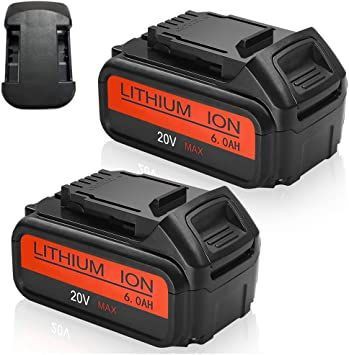Maximizing Energy – The Secrets of 6V Dry Cell Batteries
Contents
- 1 Maximizing Energy – The Secrets of 6V Dry Cell Batteries
- 1.1 6V Dry cell batteries
- 1.2 Basic components and structure of a dry cell battery.
- 1.3 Types of 6V Dry Cell Batteries
- 1.4 How 6V Dry Cell Batteries Work
- 1.5 Maintenance and Care
- 1.6 RAYOVAC Heavy Duty Lantern Battery, 6 VOLT Screw
- 1.7 Terminals
- 1.8 Energizer Max 6V Lantern Battery
- 1.9 PROS
- 1.10 CONS
- 1.11 Conclusion
6V Dry cell batteries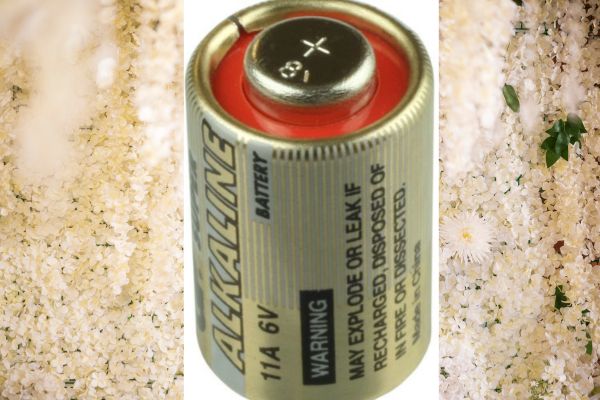
6V dry cell batteries play a pivotal role in our daily lives by providing reliable and portable power for a multitude of devices and applications From powering essential household items like flashlights and remote controls to ensuring the smooth operation of various gadgets toys and tools these batteries offer convenience and versatility.
Their longevity and shelf life make them dependable energy sources especially in emergencies Additionally, 6V dry cell batteries are integral to countless industrial commercial and recreational applications underscoring their significant contribution to modern living.
How To Choose The Right 6V Dry Cell Battery
Determine Your Device’s Requirements
- Check your device’s specifications or manual to identify the type voltage and size of battery it requires.
Consider Battery Chemistry
- Understand the differences between battery chemistry (e.g., alkaline, zinc-carbon, lithium) and choose the one that best suits your device’s needs, taking into account factors like capacity and longevity.
Expiration Date
- Look for the expiration date on the battery packaging and choose a battery with a longer shelf life if you don’t plan to use it immediately.
Brand and Quality
- Opt for reputable battery brands known for their reliability and performance as they are more likely to meet stated specifications.
Read User Reviews
Check online user reviews and ratings for specific battery brands and types to gain insights into real-world performance and reliability.
Basic components and structure of a dry cell battery.
A dry cell battery is a type of electrochemical cell that generates electric power through chemical reactions. Its basic components and structure typically include:
- Cathode (Positive Electrode): This is the positive terminal of the battery. It is typically made of a carbon rod surrounded by a mixture of manganese dioxide and other substances which serve as the cathode’s active materials.
- Anode (Negative Electrode): This is the negative terminal of the battery. It usually consists of a zinc metal casing or cylinder. Zinc is the primary component that chemical reactions during battery operation.
- Electrolyte: The cathode and anode are separated by an electrolyte, which is typically a moist paste or gel containing ammonium chloride and zinc chloride . The electrolyte serves as a medium through which ions can move between the cathode and anode allowing the chemical reactions to occur.
- Terminal: The battery has two external terminals one positive and one negative which allow it to be connected to external devices or circuits to deliver electric power.
Types of 6V Dry Cell Batteries
Alkaline Batteries (6V)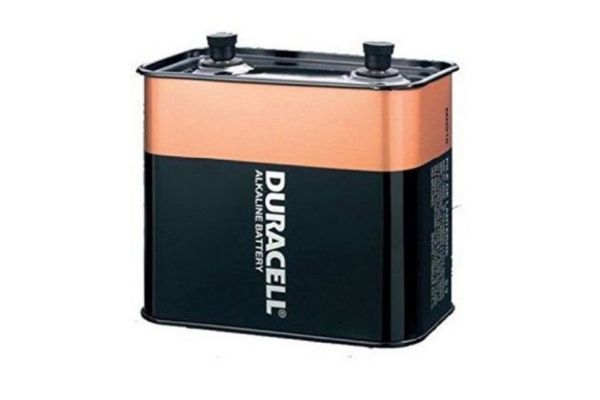
- Performance: Alkaline batteries offer a relatively high energy density which means they can provide more power for longer durations compared to zinc-carbon batteries.
- Applications: Commonly used in a wide range of devices such as flashlights remote controls toys and portable electronics. They are versatile and suitable for both high and low-drain devices.
- Advantages: Longer shelf life, improved performance over zinc-carbon batteries and a relatively flat discharge curve which means they maintain a steady voltage until they are nearly depleted.
- Disadvantages: Alkaline batteries are not rechargeable and their performance may drop significantly in cold temperatures.
Zinc-Carbon Batteries (6V)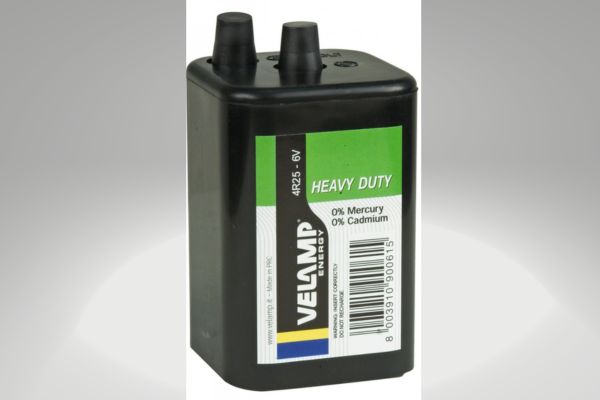
- Performance: These batteries have a lower energy density compared to alkaline batteries and are best suited for low-drain devices.
- Applications: Typically used in devices with low power requirements such as remote controls wall clocks and basic toys.
- Advantages: Economical and widely available. They are suitable for devices with infrequent use or low energy demands.
- Disadvantages: Shorter lifespan and lower capacity compared to alkaline batteries. They are not as well-suited for high-drain devices.
Lithium Batteries (6V)
-
- Performance: Lithium batteries are known for their high energy density making them ideal for high-drain devices that require a stable voltage output.
- Applications: Often used in professional equipment medical devices, digital cameras and other devices requiring reliable and long-lasting power.
- Advantages: Exceptional performance in extreme temperatures long shelf life and a low self-discharge rate. Lithium batteries are also lightweight compared to other types.
- Disadvantages: Higher cost compared to alkaline and zinc-carbon batteries. They are not rechargeable.
Storage conditions of 6V dry cell battery
The recommended storage temperature for most batteries is 15C(59F); the extreme allowable temperature is 40C to 50C (-40c to112F) for more chemistry.
How 6V Dry Cell Batteries Work
1. Anode Reaction (Negative Electrode)
- In the anode compartment typically made of zinc (Zn) in 6V dry cell batteries the following reaction takes place:
- Zinc (Zn) → Zinc ions (Zn^2+) + 2 Electrons (2e-)
This reaction results in the generation of zinc ions and releases two electrons.
2. Cathode Reaction (Positive Electrode)
- In the cathode compartment usually composed of manganese dioxide the following reaction occurs:
- Manganese dioxide (MnO2) + Water (H2O) + Electrons (2e-) → Manganese (III) oxide-hydroxide (MnOOH) + Hydroxide ions (OH-)
This reaction involves the reduction of manganese dioxide and the creation of manganese (III) oxide-hydroxide along with hydroxide ions.
3. Ion Flow through Electrolyte
- The anode and cathode compartments are separated by an electrolyte typically containing ammonium chloride (NH4Cl) or zinc chloride (ZnCl2) in a 6V dry cell battery.
- Zinc ions (Zn^2+) from the anode and hydroxide ions (OH-) from the cathode flow through the electrolyte to maintain charge neutrality, allowing for the transfer of electrons through an external circuit.
Maintenance and Care
Proper storage, handling, and disposal of batteries including 6V dry cell batteries are crucial for safety and environmental reasons. To store them safely keep them in a cool dry place away from direct sunlight and extreme temperatures.
When handling batteries avoid puncturing or damaging the casing especially for lithium batteries . Dispose of batteries responsibly by recycling them at designated collection points or recycling centers this helps prevent environmental contamination. Never dispose of batteries in regular household trash.
RAYOVAC Heavy Duty Lantern Battery, 6 VOLT Screw
Terminals

- Rayovac Heavy-Duty 6V Lantern Battery:This is a specific type of battery designed for lanterns and other industrial applications, known for its durability and reliability.
- Screw Terminals: This battery features screw terminals for easy and secure connections, making it suitable for use in various industrial settings.
- Reliable Power Source: With its heavy-duty design, this 6V lantern battery is a dependable power source, especially in situations where consistent performance is crucial.
Energizer Max 6V Lantern Battery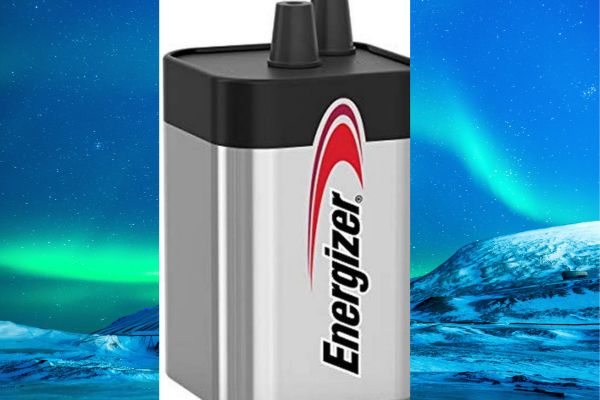
- 6-Volt Power Source: With its 6-volt power output this battery provides the necessary voltage to effectively operate lanterns and other equipment. It’s specifically tailored to meet the voltage requirements of these devices ensuring they function optimally.
- Energizer 6-volt Lantern Battery: This battery is part of the renowned Energizer brand, known for its commitment to quality and performance in the realm of batteries. It’s a trusted name when it comes to powering various electronic devices including lanterns.
- Country of Origin is China: This particular battery is manufactured in China which is a common origin for many electronic products. The country of origin can provide insight into manufacturing processes and quality standards.
PROS
- 6V dry cell batteries are known for their reliability, making them suitable for various applications including lanterns radio and portable electronic devices.
- They have a long shelf life meaning you can store them for extended periods without significant capacity loss, making them ideal for emergency situations.
- These batteries are compact and portable making them convenient for powering portable devices and equipment.
CONS
- Unlike rechargeable batteries 6V dry cell batteries are disposable and need to be replaced after their energy is depleted which can lead to increased waste.
- They typically have lower energy density compared to rechargeable batteries so they may not provide as much power or run time in certain high-drain devices.
- While individual 6V dry cell batteries are relatively inexpensive the cost can add up over time, especially if you frequently use devices that require them.
Conclusion
6V dry cell batteries play a pivotal role in our daily lives by providing reliable and portable power for a multitude of devices and applications From powering essential household items like flashlights and remote controls to ensuring the smooth operation of various gadgets toys and tools these batteries offer convenience and versatility.
How does a dry cell battery work?

A dry cell battery utilizes a paste-like electrolyte, which contains just enough moisture to enable the flow of electric current. Unlike wet cell batteries, dry cells don’t have excess liquid, so they won’t spill when used in any position.
Does dry battery need water?
Dry batteries are intentionally engineered to be maintenance-free and do not need the addition of water. In fact, adding water to a dry battery can be detrimental, leading to potential damage and a decrease in its overall performance. These batteries are specifically designed to operate without the need for periodic maintenance such as refilling with water, which is common in some other types of batteries


